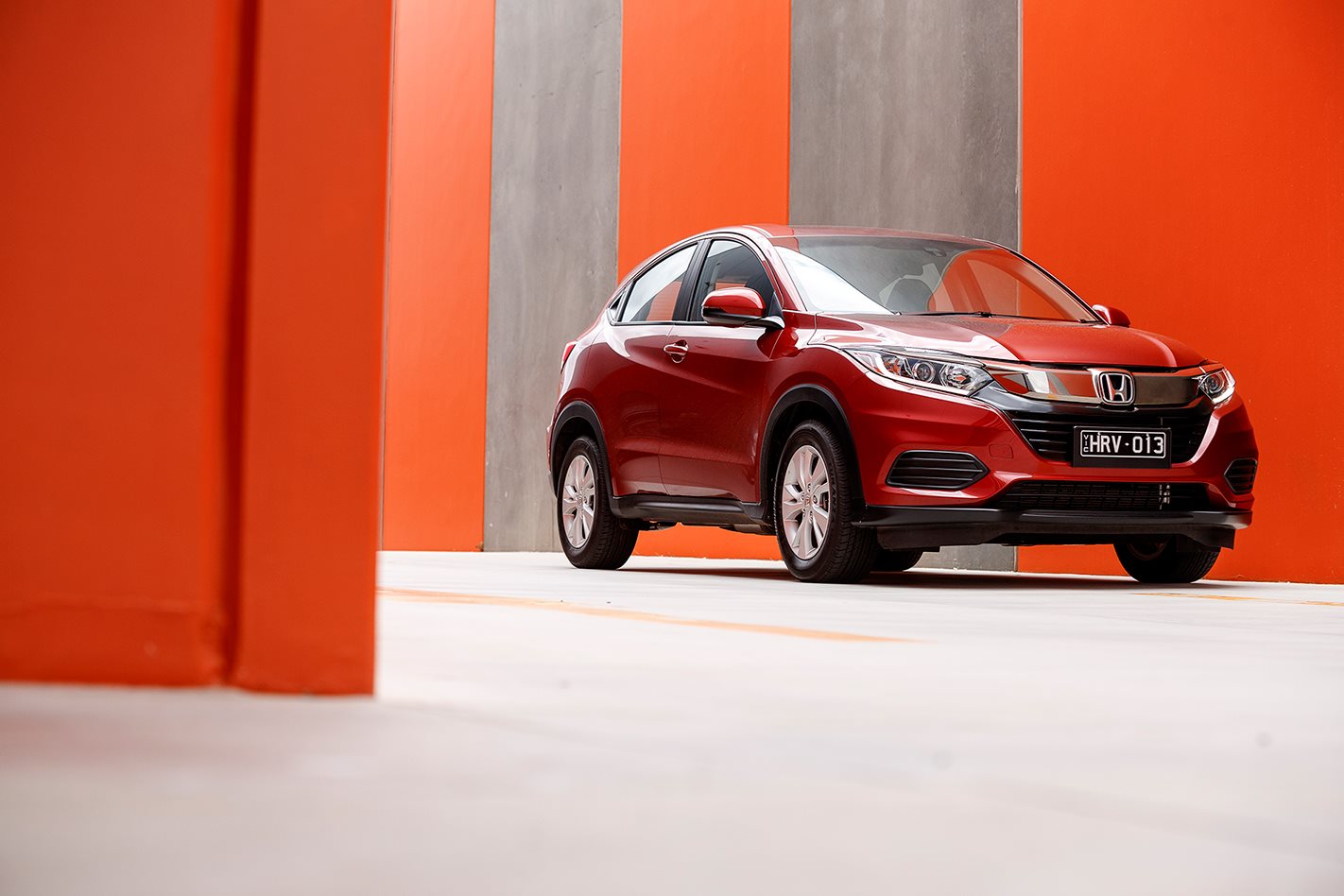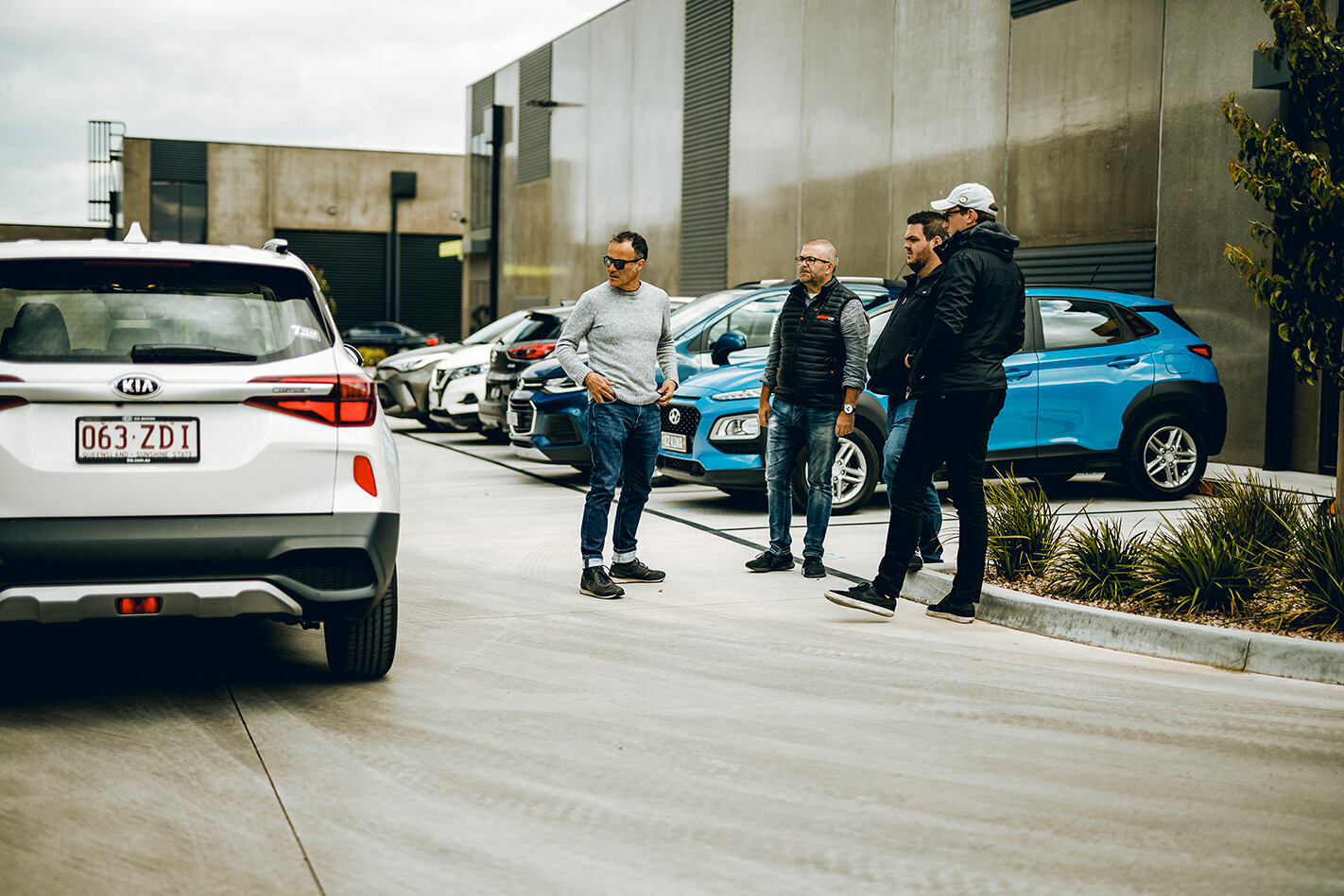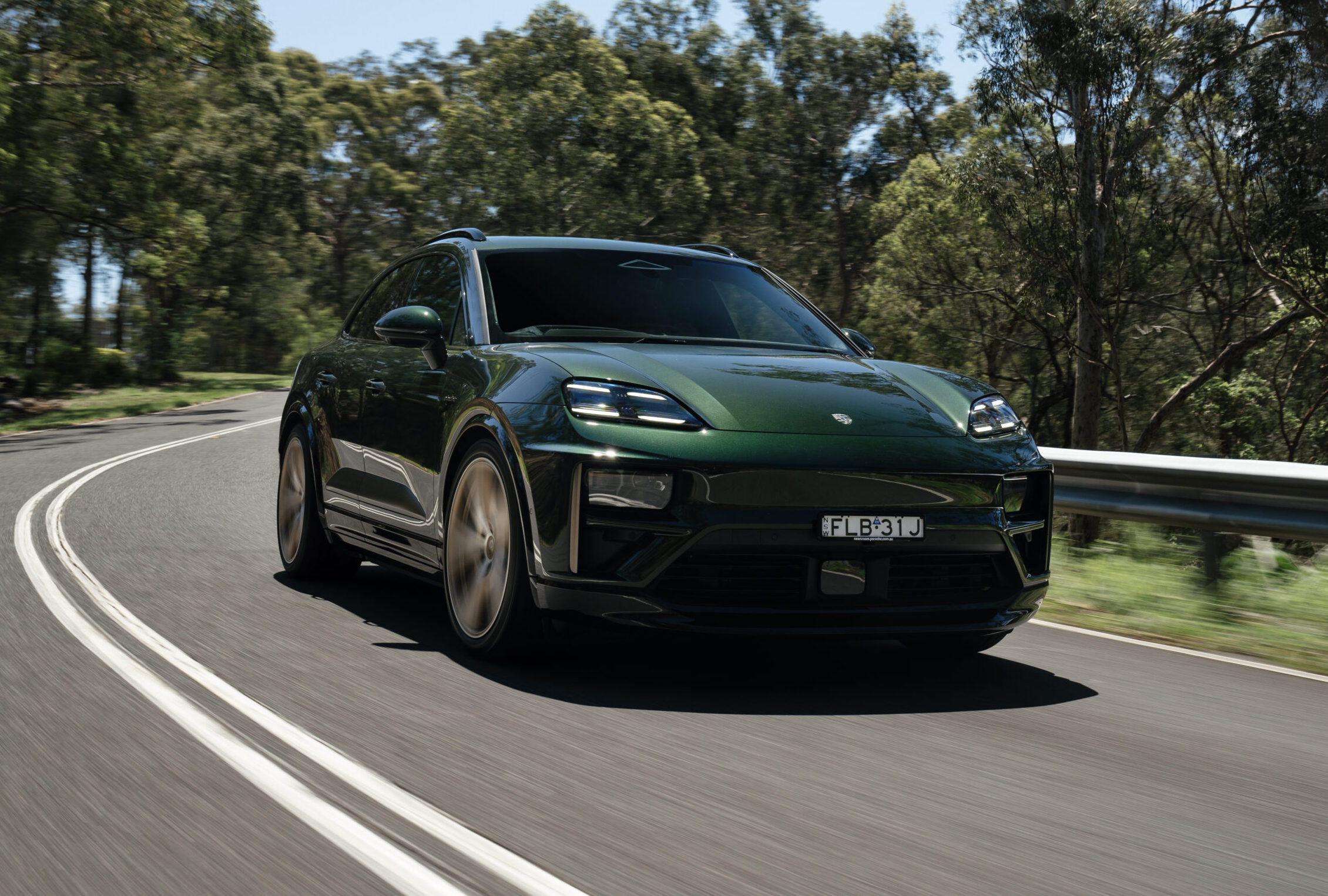Final Position: 4th
Score: 7.5/10
5 0 5
Plus & Minus
The HR-V has some pretty impressive stats under its rising beltline. Slotting beneath the CR-V mid-sizer and based on Honda’s global supermini platform, the 1998 original arguably set the modern small-SUV template. Its GK Jazz-derived successor of 2014 has been a consistent global top-10 smash. Five years on and with only a minor update, the series remains at the pointy end of the popularity stakes.
There are a variety of reasons behind the HR-V’s success – including brand trust, elegant design, unique packaging, sharp pricing and driving ease. Plus, the near-invisible nip-and-tuck of 2018 brought a worthwhile round of engineering improvements, including standard AEB and a revised CVT with stepped ratios for that reduced droning sensation.
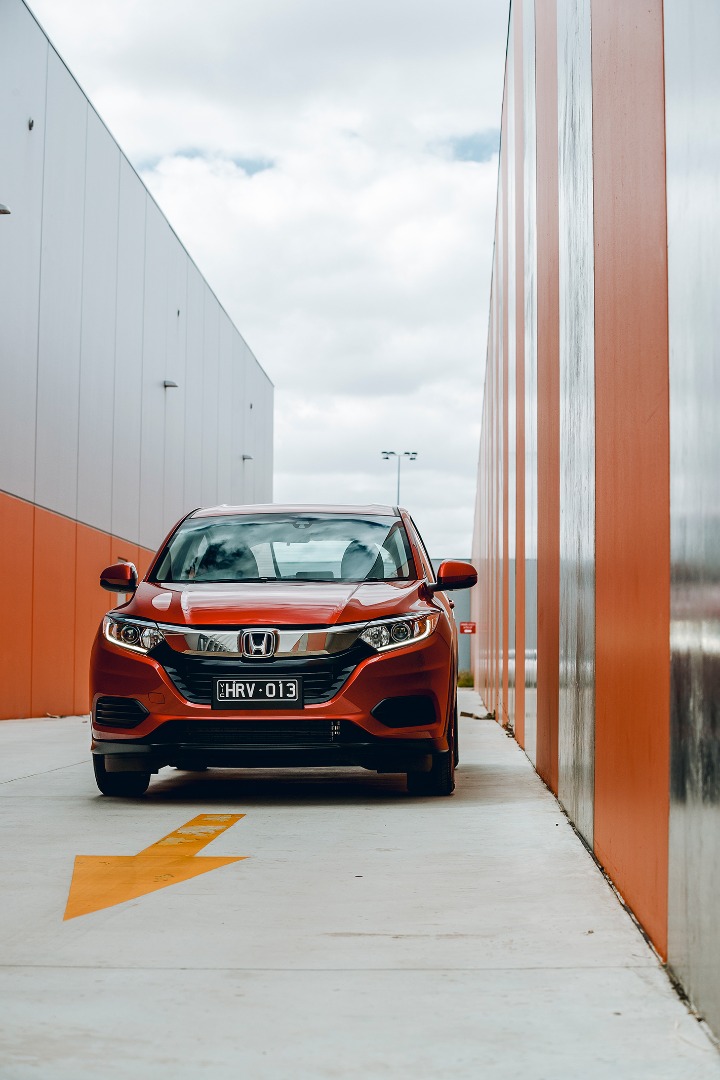
That’s progress, but in the face of newer rivals, is it enough to keep the Thai-built HR-V fierce? Initial impressions suggest so. While Honda’s recent sedans and hatches have suffered from a serious case of overstyling, its SUVs have adhered to a more restrained approach that blends a comparatively sleek profile with superb functionality for a relatively compact vehicle.
Not that passengers will notice any disconcerting dimensional limitations inside, since that Jazz basis brings a long wheelbase, an airy, classy ambience and Honda’s vaunted Magic Seat packaging – where the fuel tank resides beneath the front rather than back seats, allowing the latter to fold neatly into the available void, for a deep, flush cargo floor, panel-van style. Result? The HR-V is a pack of Winnie blues, set of psychedelic curtains, lurid stripes, ROH mags and a Don’t Bother Knockin’ if the Car is Rockin’ sticker away from a modern-day Sandman.
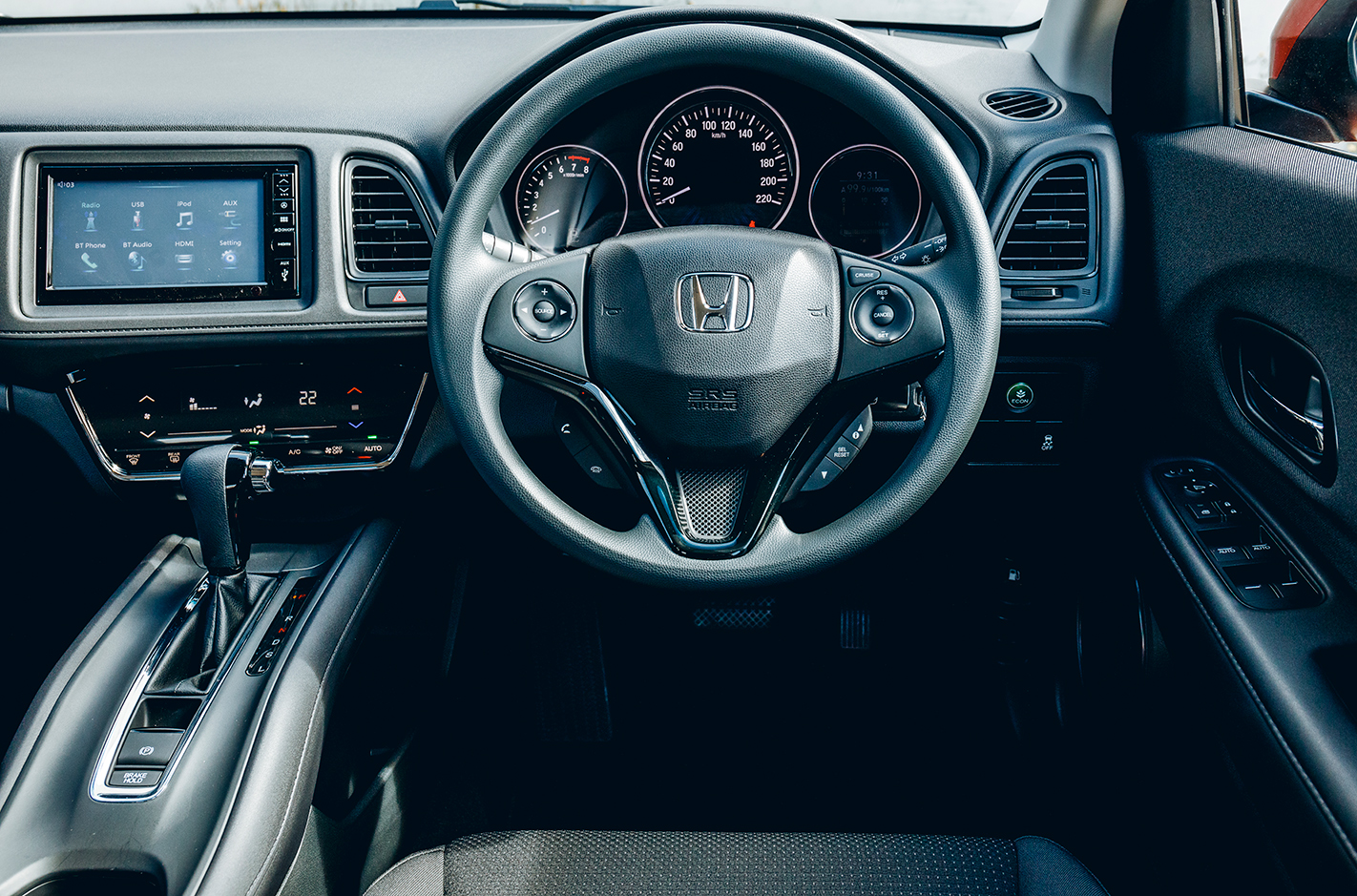
There’s even a hint of the HQ Holden dash in the HR-V’s fascia, meaning it’s simple if workmanlike to behold. But has Honda gone too far eliminating clutter? The analogue instruments are a model of clarity but there’s no digital speedo; the haptic sensor-operated climate system’s missing buttons and dials means even a menial task like altering the temperature is distracting. And don’t get us started on the aftermarket-looking touchscreen, with its fiddly toggle switches, low-fi resolution and infuriating reflections. However, we understand running changes to HR-V are imminent, including a multimedia upgrade. Hurry up, Honda.
Speaking of speed, the 1.8-litre single-cam VTEC atmo engine may be old, but it’s a healthy, revvy little unit in the best company tradition. Quick off the mark and now less prone to howling thanks to that artificially stepped CVT tech, it really pulls energetically as the tacho swings beyond the 4000rpm mark, accompanied by one of the more mellifluous mechanical wails in this class. And while the numbers confirm that the lithesome HR-V is a middling performer, the seat-of-the-pants feel is one of eager exuberance. Near test-best economy is another virtue.
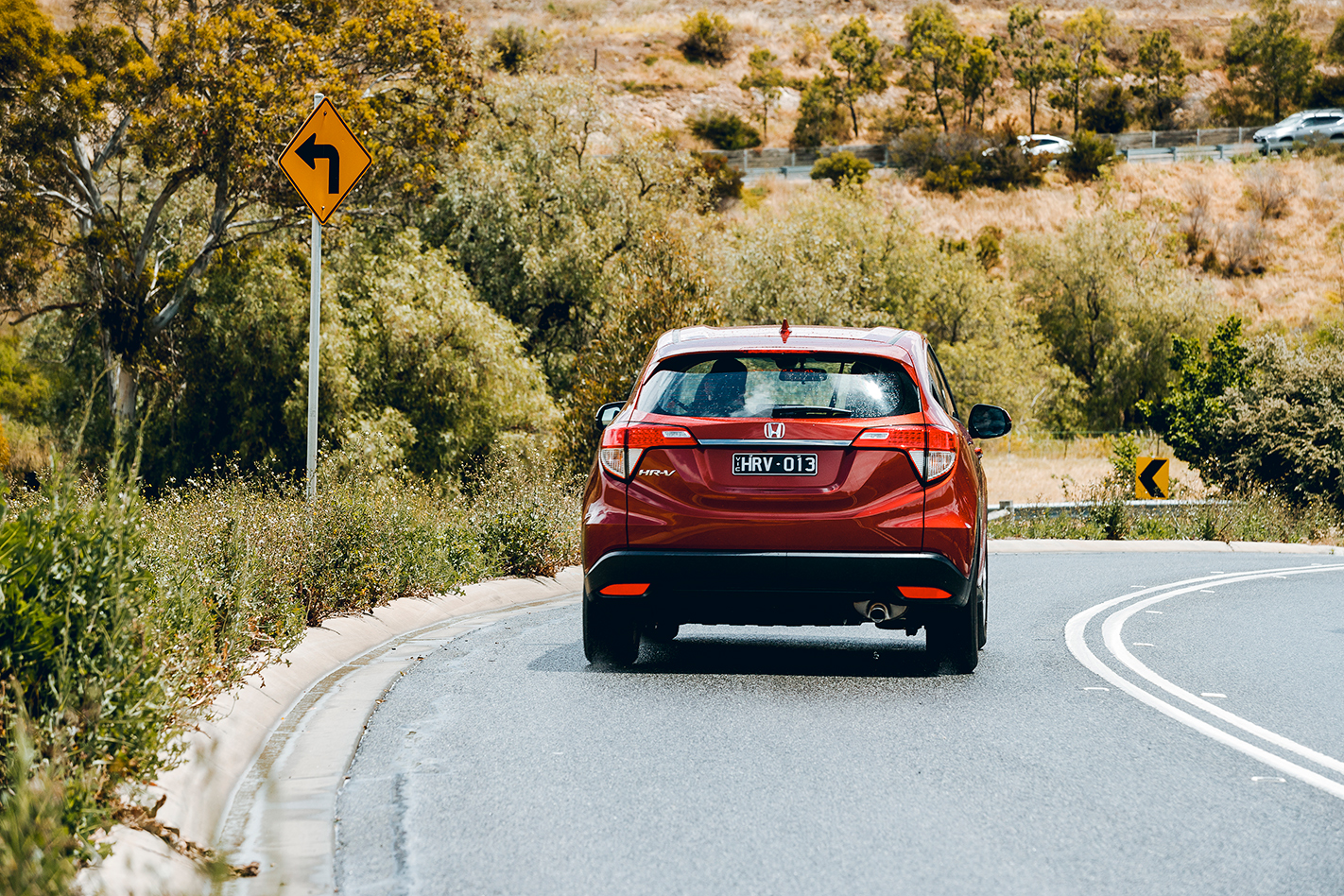
We’re also pleased with how light yet precise the HR-V’s sweet steering is, though more engagement would be appreciated. It allows for fluent and assured handling, backed up by unflappable roadholding. On the standard 16-inch rubber, there’s also an underlying softness to the (strut-front/torsion-rear) suspension, though the upshot is a degree of unsettledness and road noise over rougher surfaces. A quick blast on gravel also revealed an overzealous ESC tune hell-bent on reeling in any oversteer.
Few rivals offer this degree of family-focused space, comfort and cargo flexibility. Underscored by quality engineering, the VTi’s mix of agility, frugality and fun remains formidable. Great value too, since your $25K includes sat-nav, a rear camera and climate control. And here’s another admirable HR-V stat. A top-four placement for a 2014-era small SUV is no mean feat.
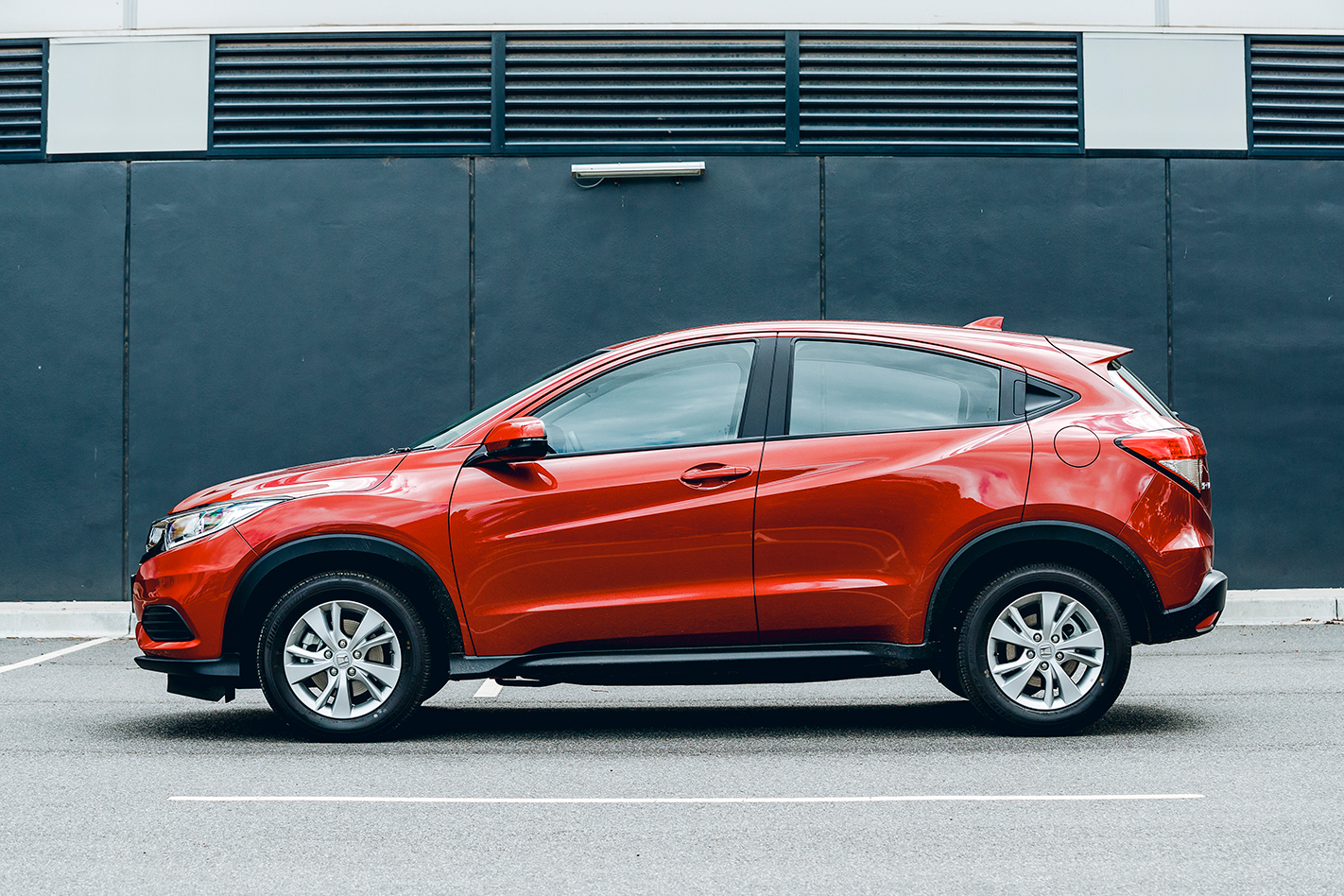
Honda HR-V VTi specs
Price: $24,990
Engine: 1799cc 4cyl, sohc, 16v
Power: 105kW @ 6500rpm
Torque: 172Nm @ 4300rpm
Transmission: CVT
Dimensions (L/W/H/W-B): 4348/1772/1605/2610mm
Weight: 1269kg
Cargo capacity: 437L
Tyres: Bridgestone Turanza ER230 215/60R16
Economy: 8.1L/100km (tested)
0-100km/h: 9.9sec (tested)
80-120km/h: 6.8sec (tested)
100-0km/h:39.7m (tested)
ANCAP rating: 5 stars
2020 Small SUV Megatest
Results
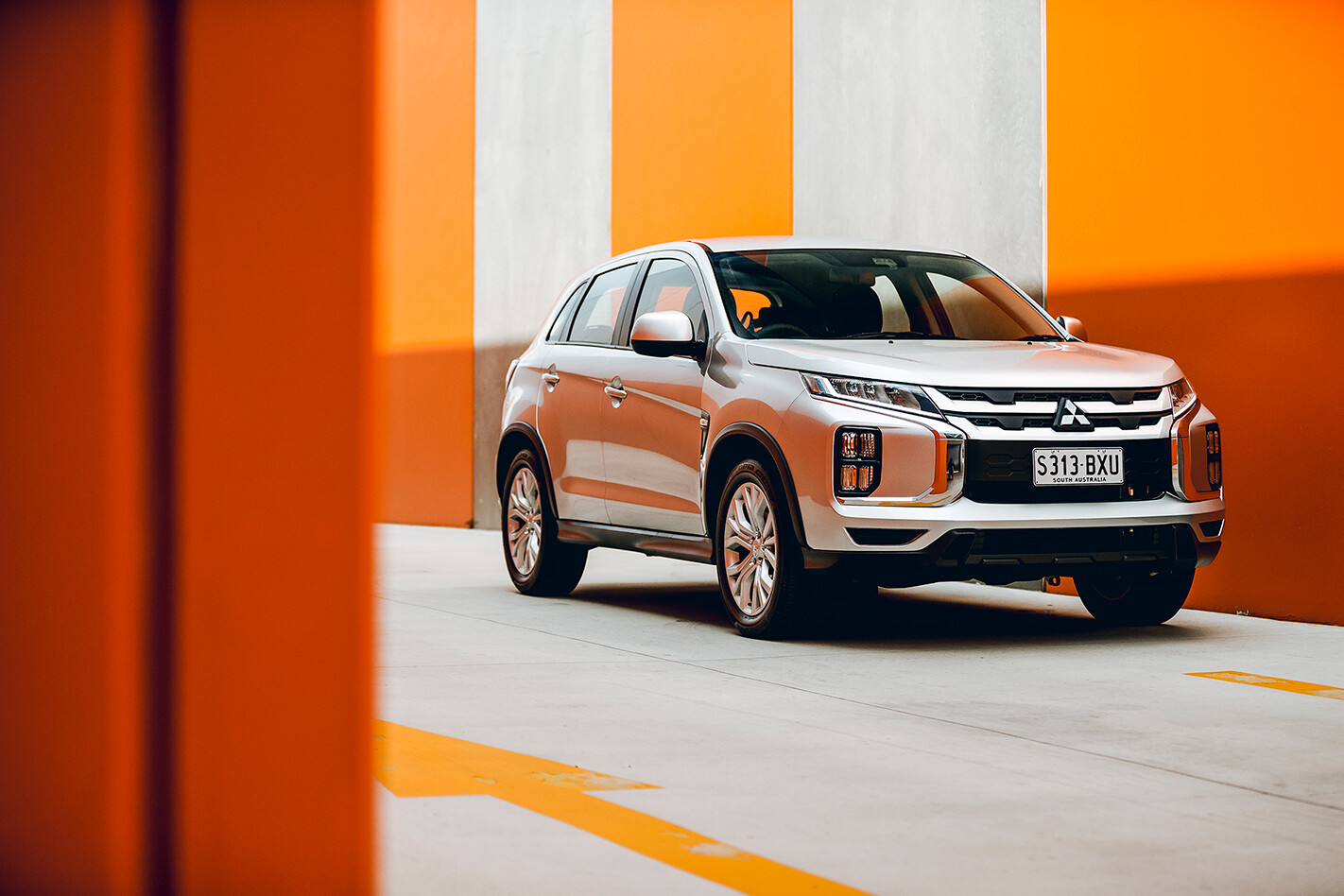 MITSUBISHI ASX
MITSUBISHI ASXScore 6/10
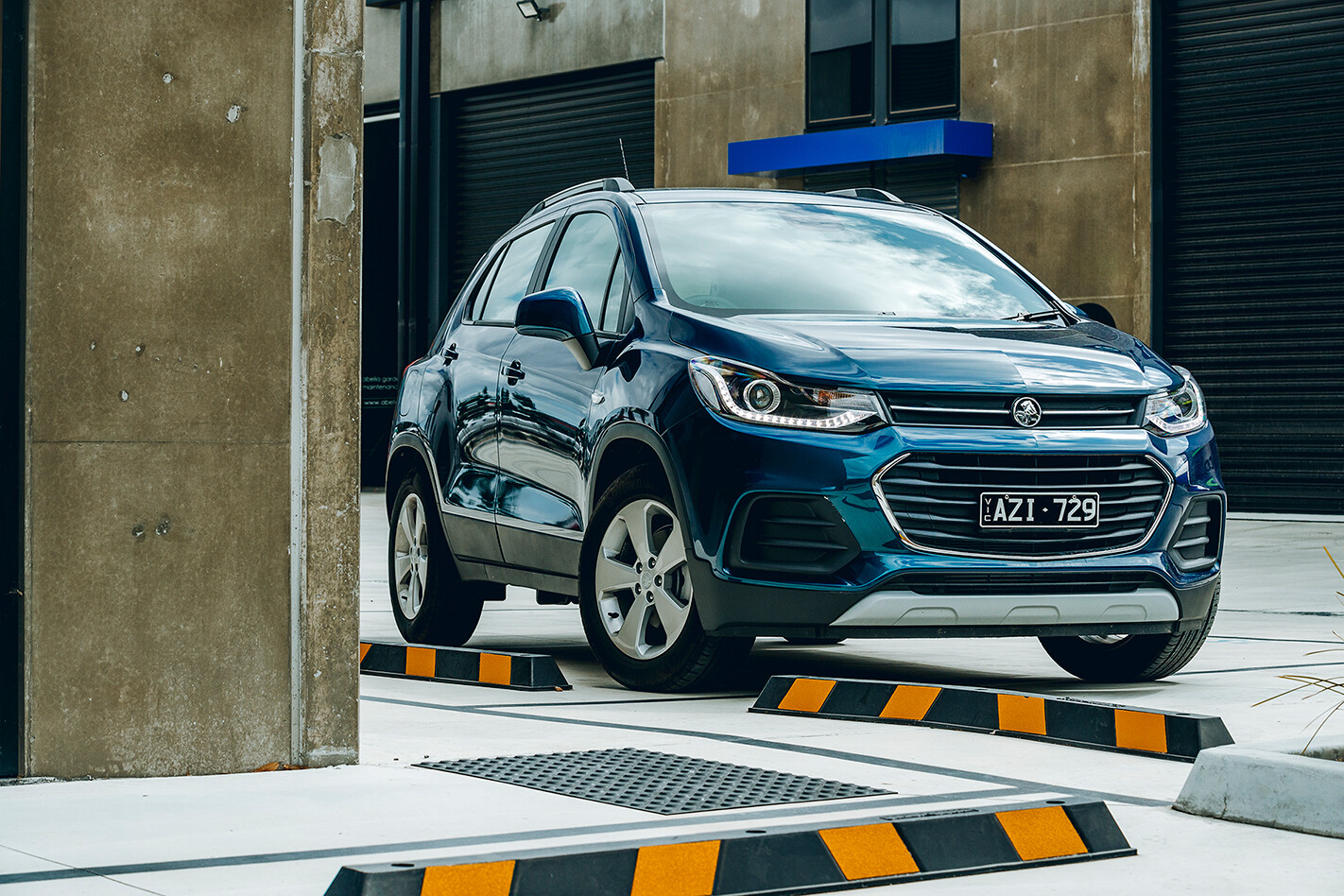 HOLDEN TRAX
HOLDEN TRAXScore 6.5/10
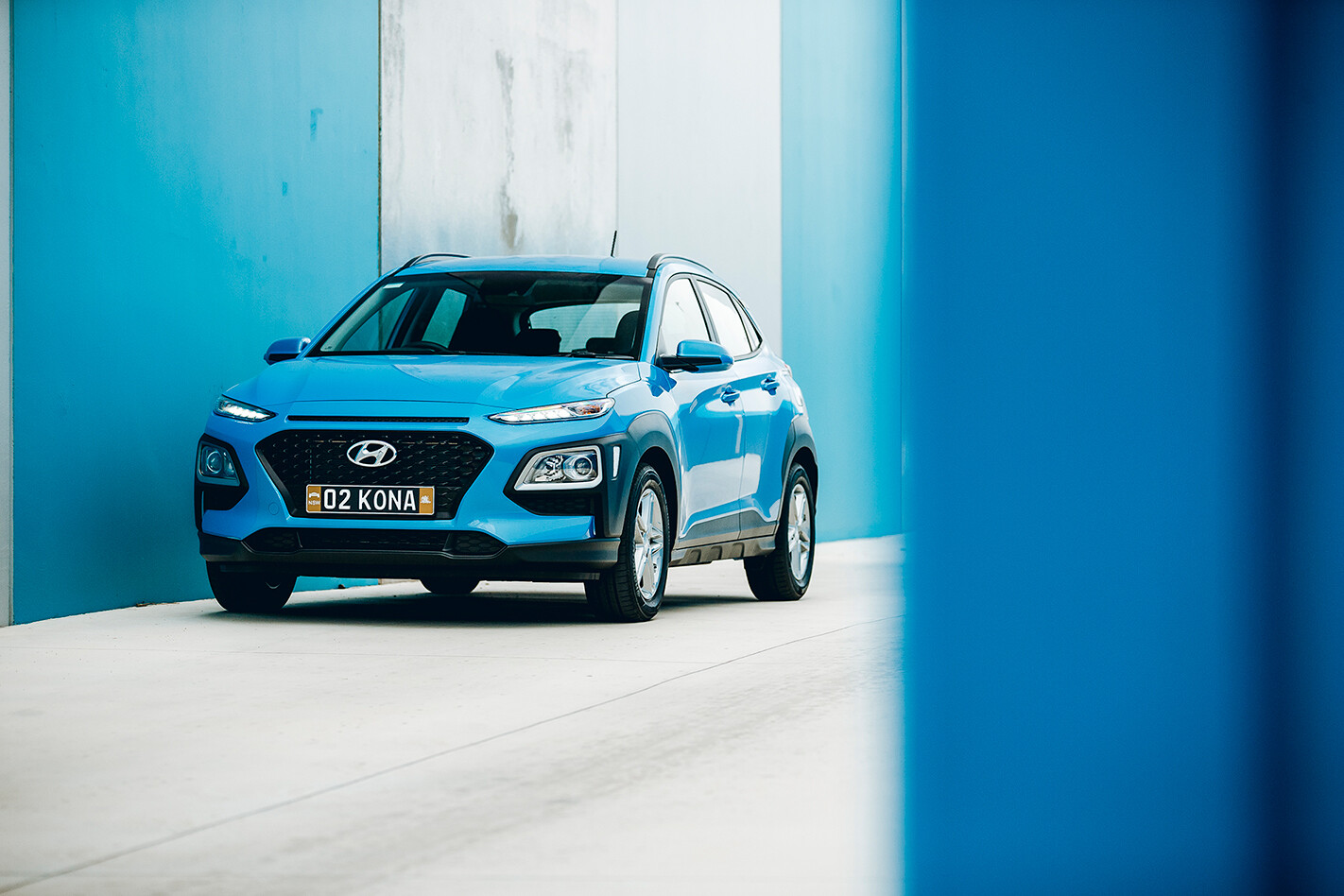 HYUNDAI KONA
HYUNDAI KONAScore 6.5/10
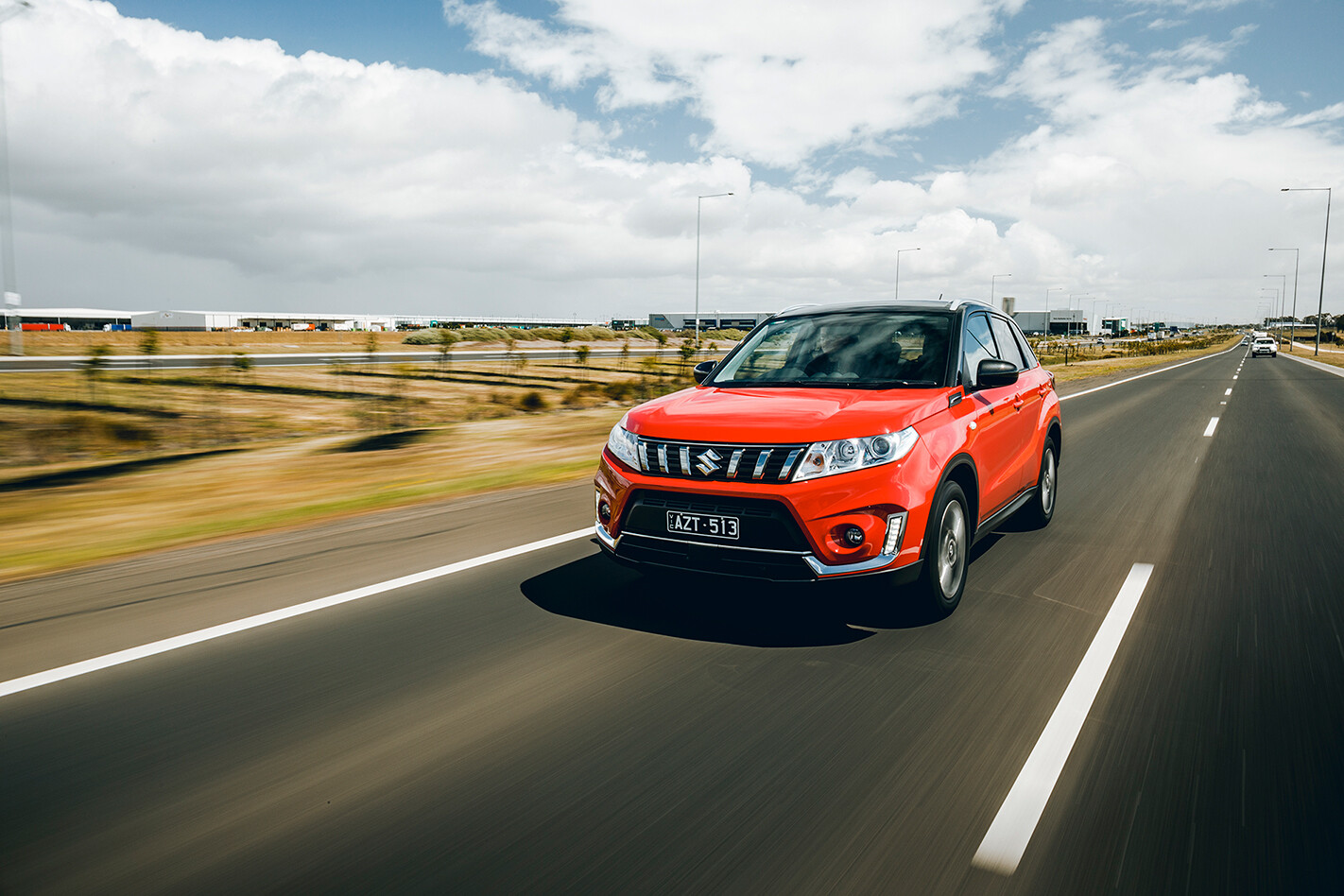 SUZUKI VITARA
SUZUKI VITARAScore 7/10
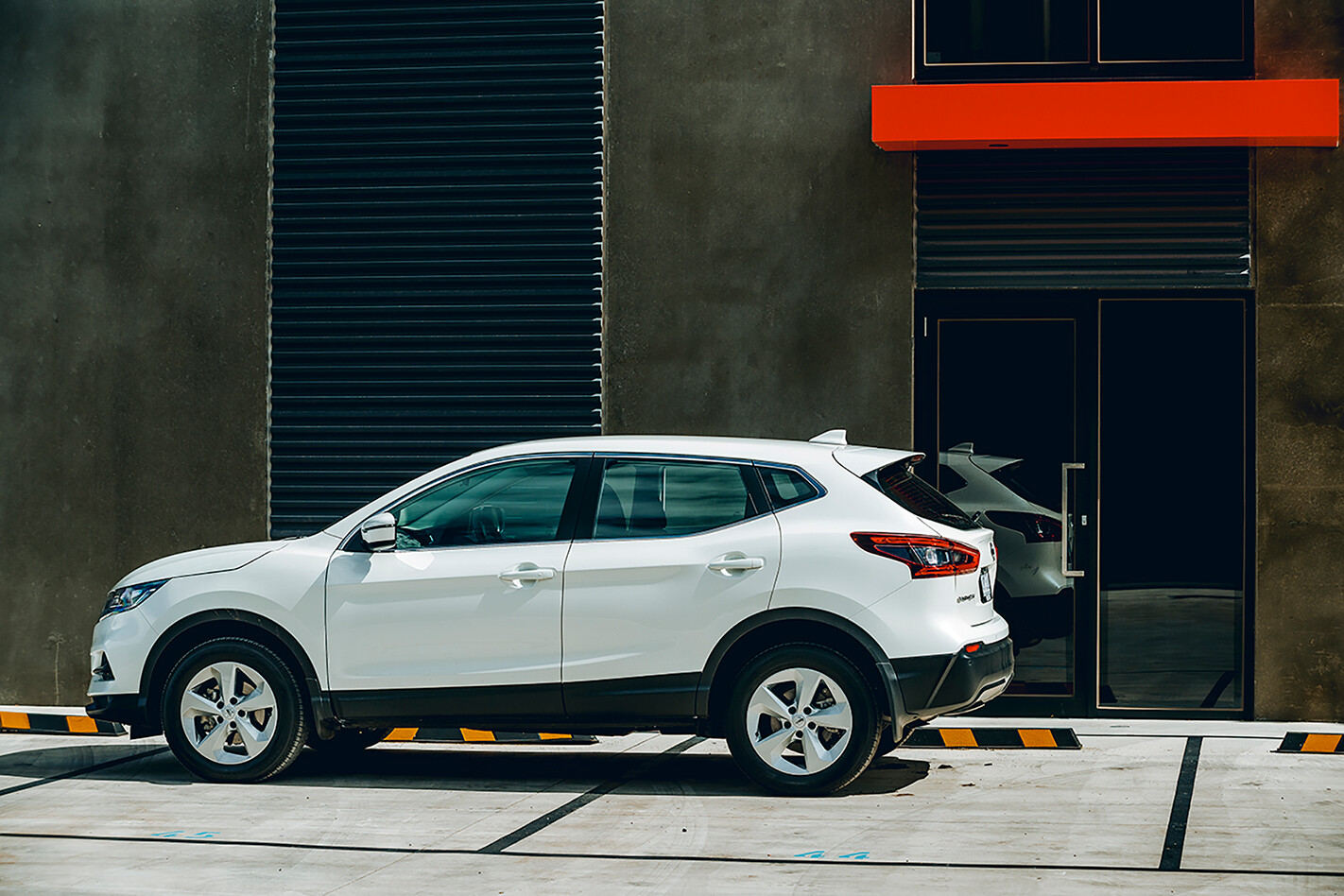 NISSAN QASHQAI
NISSAN QASHQAIScore 7/10
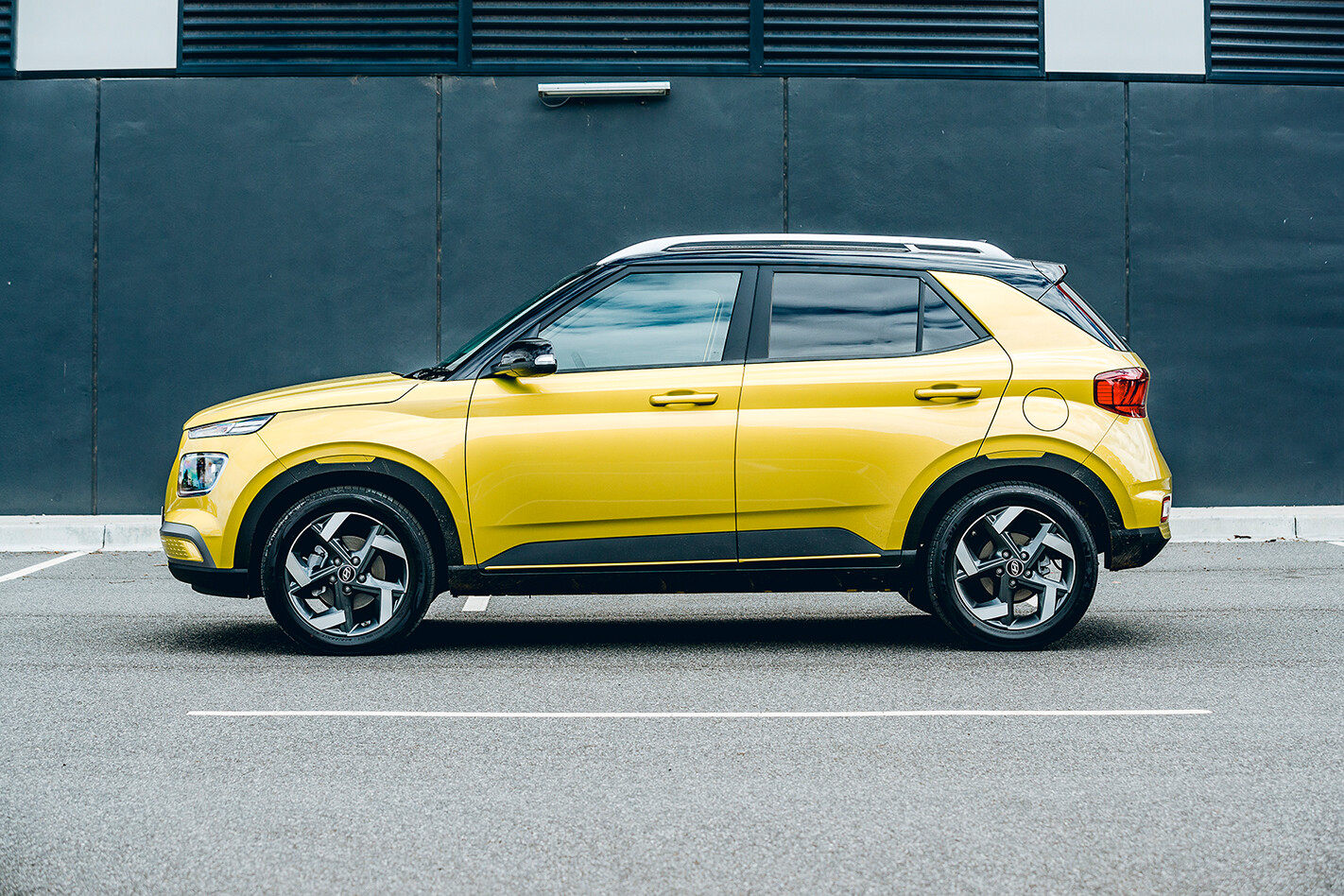 HYUNDAI VENUE
HYUNDAI VENUEScore 7.5/10
 MAZDA CX-3
MAZDA CX-3Score 7.5/10
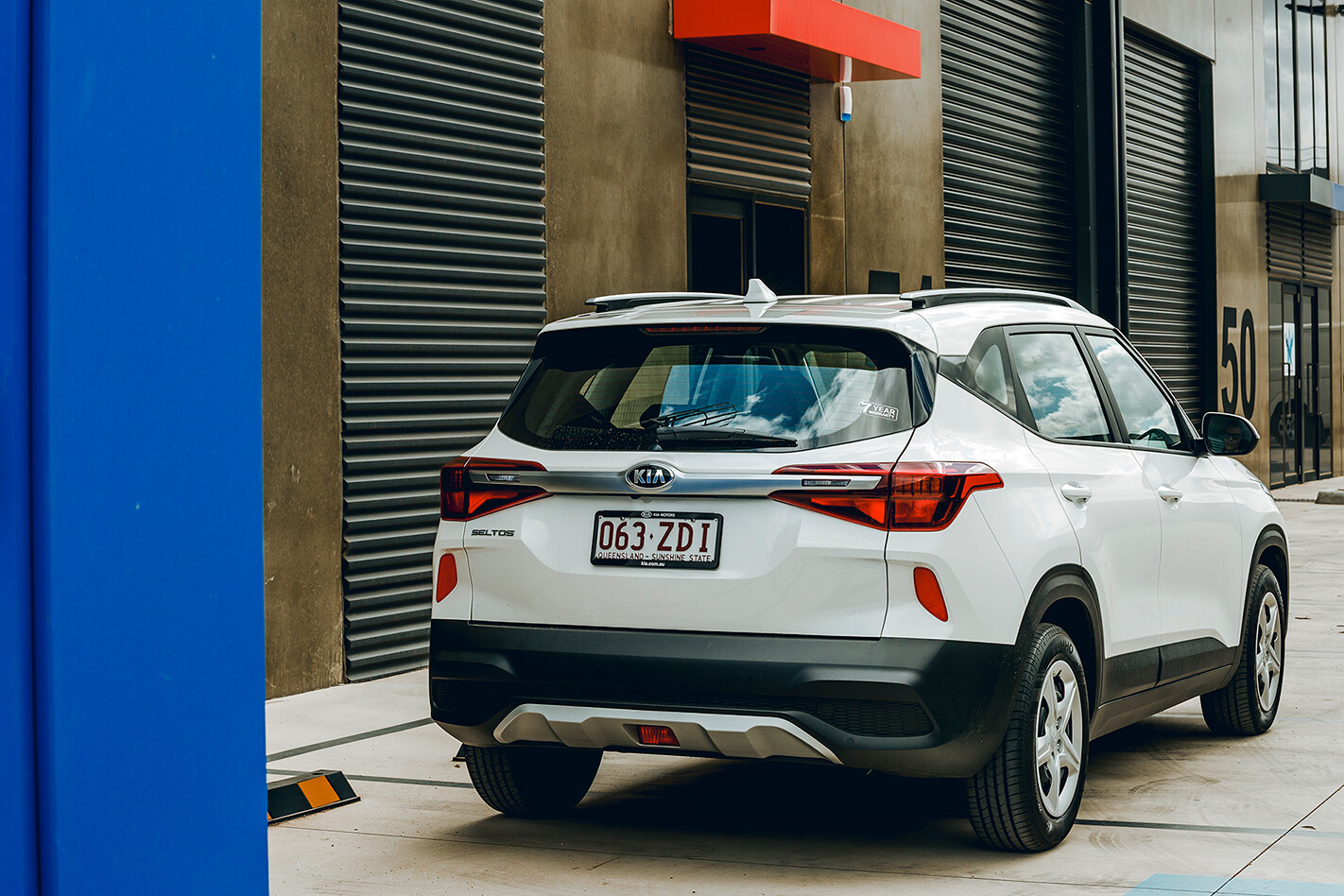 KIA SELTOS
KIA SELTOSScore 8.5/10
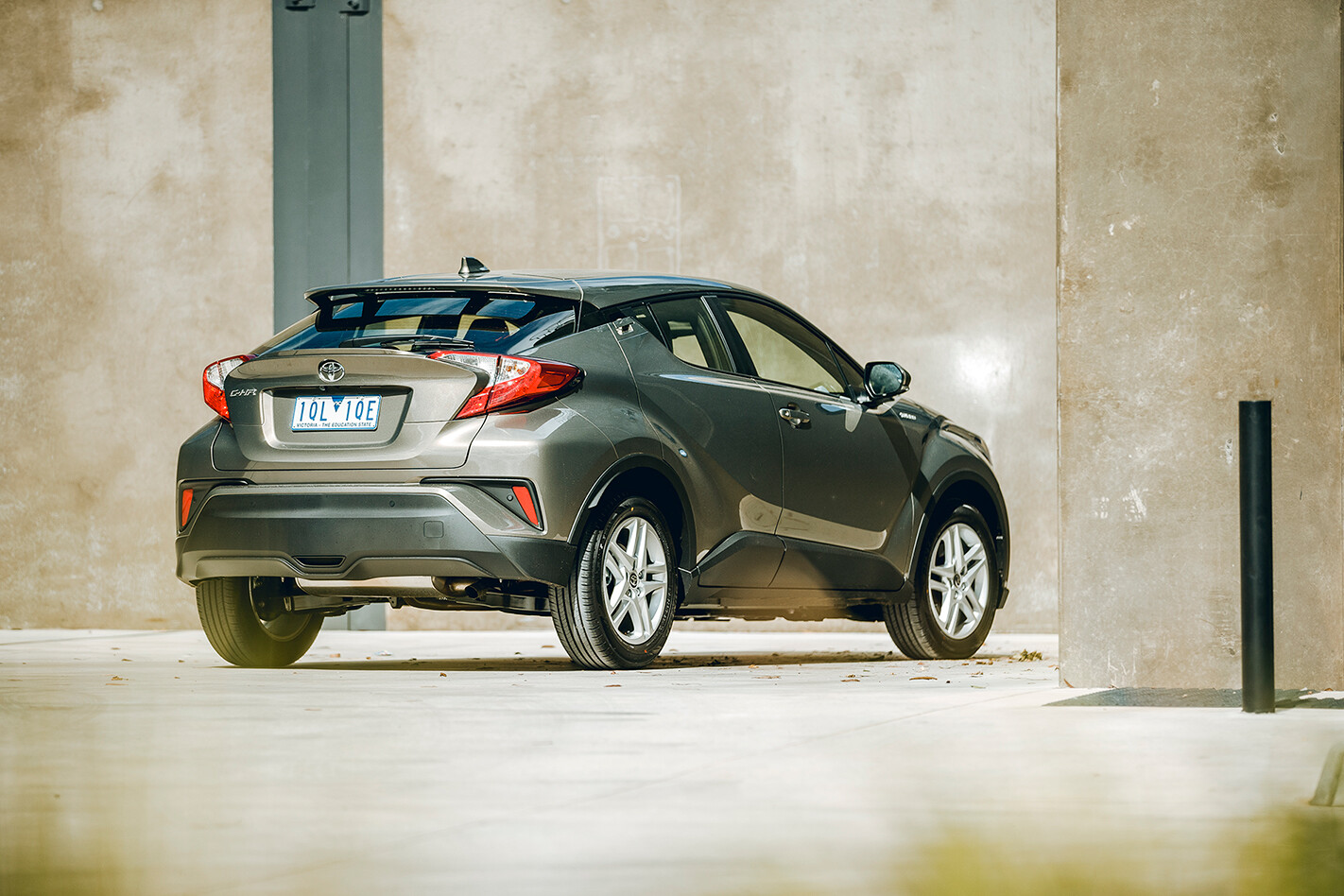 TOYOTA C-HR
TOYOTA C-HRScore 8.5/10

